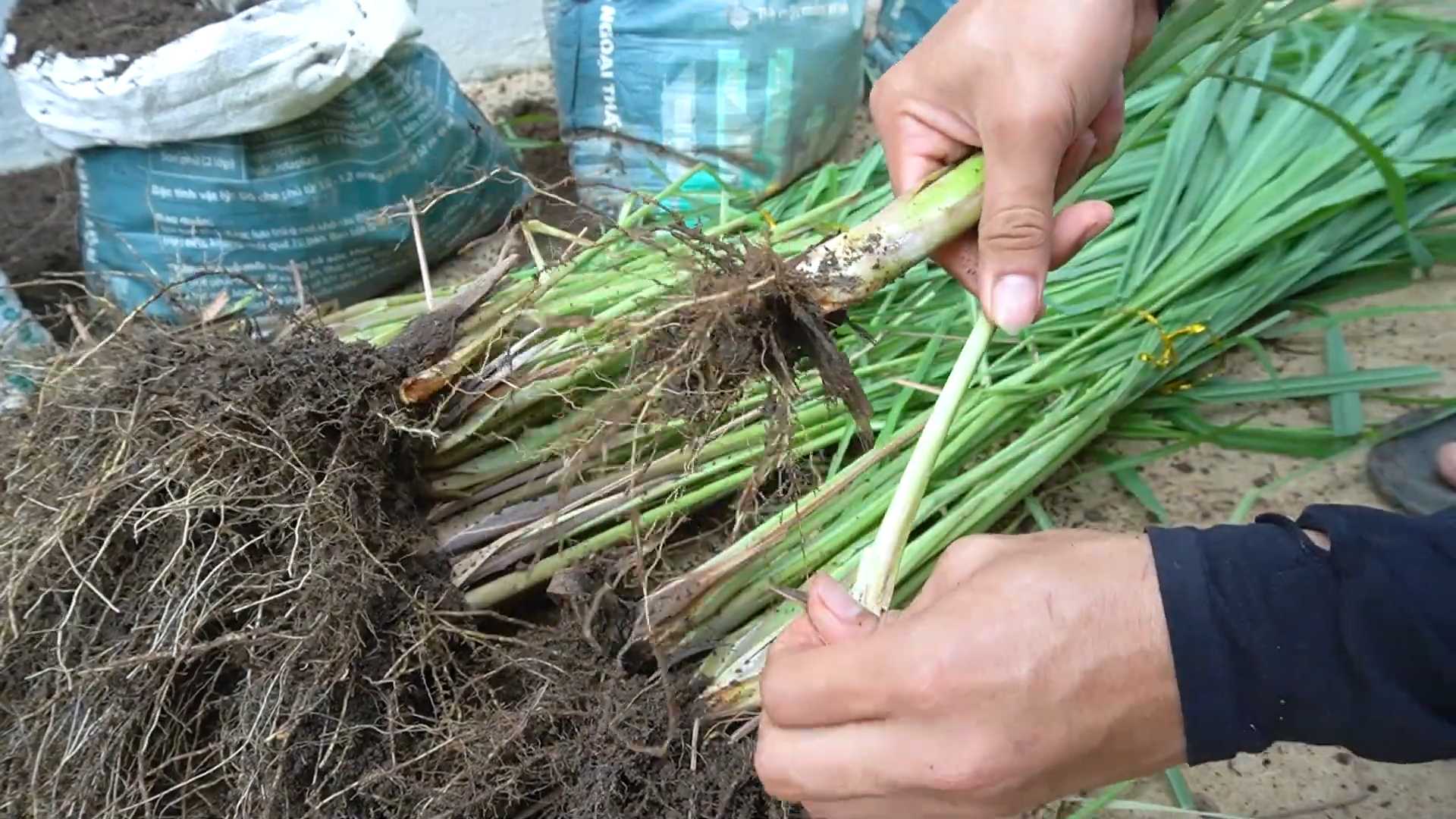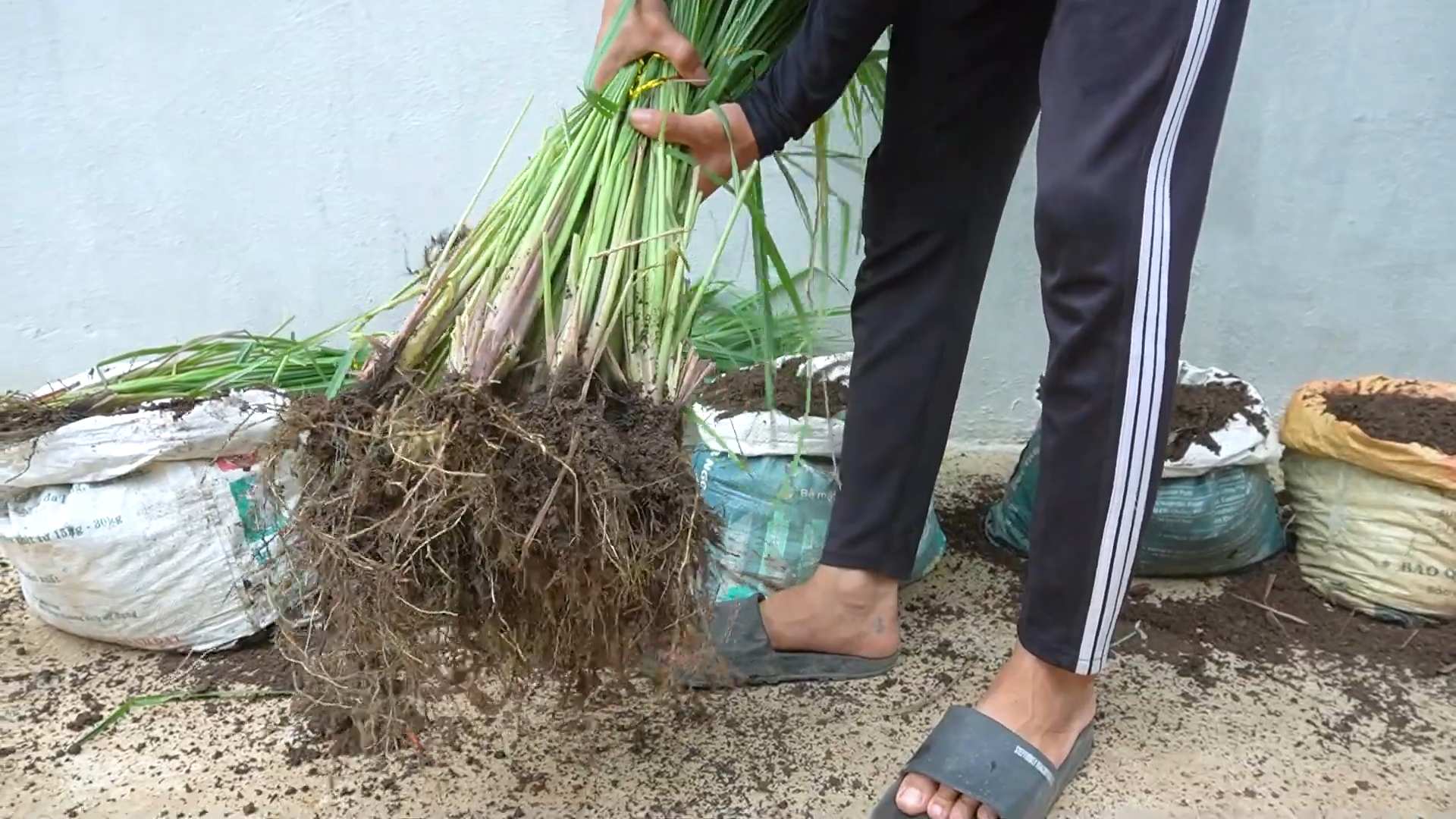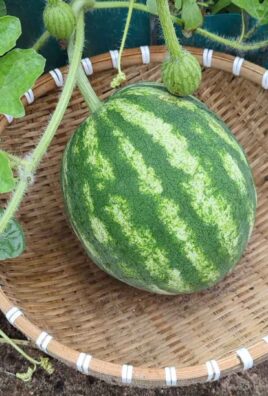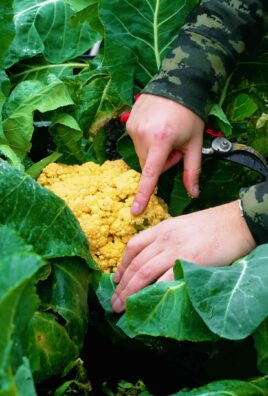Plant Lemongrass at Home and transform your garden (or even your windowsill!) into a fragrant, culinary oasis. Have you ever dreamed of snipping fresh lemongrass for your Thai curry, or brewing a soothing tea with leaves straight from your backyard? Well, dream no more! This DIY guide will unlock the secrets to successfully growing this versatile herb, regardless of your gardening experience.
Lemongrass, with its vibrant citrusy aroma, has been cherished for centuries in Southeast Asian cultures. It’s not just a delicious ingredient; it’s also been used traditionally for its medicinal properties and as a natural insect repellent. Imagine having that power right at your fingertips!
In today’s world, where fresh, healthy ingredients are more valued than ever, learning how to plant lemongrass at home is a game-changer. Store-bought lemongrass can be expensive and sometimes lacks the vibrant flavor of freshly grown. Plus, who doesn’t love the satisfaction of nurturing a plant from a simple stalk to a thriving bush? This DIY trick is perfect for anyone looking to add a touch of exotic flavor to their cooking, embrace a more sustainable lifestyle, and enjoy the beauty of homegrown herbs. I’m excited to share my tried-and-true methods for successfully growing lemongrass, even if you have limited space or a less-than-green thumb. Let’s get started!

Grow Your Own Lemongrass: A Beginner’s Guide
Hey there, fellow plant enthusiasts! I’m so excited to share my experience with growing lemongrass at home. It’s easier than you think, and having fresh lemongrass on hand for cooking and teas is a total game-changer. Plus, it smells amazing! This guide will walk you through everything you need to know, from choosing your lemongrass to harvesting your fragrant stalks.
Choosing Your Lemongrass
Before we dive into the planting process, let’s talk about where to get your lemongrass. You have a few options:
* Grocery Store Stalks: This is the most common and affordable way to start. Look for lemongrass stalks that are firm, green at the top, and have a bulbous base. Make sure they look healthy and haven’t started to dry out. Organic is always a plus!
* Online Nurseries: If you’re looking for a specific variety of lemongrass (like ‘East Indian’ or ‘West Indian’), online nurseries are your best bet. They often ship bare-root plants or small starter plants.
* Local Nurseries: Check your local nurseries for lemongrass plants. This is a great way to support local businesses and get advice from experienced gardeners.
Rooting Lemongrass in Water
This is the first and arguably most crucial step. We need to encourage those grocery store stalks to grow roots before planting them in soil.
1. Prepare the Stalks: Trim the top of the lemongrass stalks, leaving about 4-5 inches of green. This helps the plant focus its energy on root development. Remove any dry or brown outer leaves from the base of the stalk.
2. Find a Suitable Container: Choose a glass or jar that’s tall enough to support the lemongrass stalks. A mason jar or a drinking glass works perfectly.
3. Add Water: Fill the container with about 1-2 inches of water. Make sure the water covers the base of the stalks, but doesn’t submerge the entire stalk. I prefer using filtered water, but tap water that’s been left out overnight to dissipate chlorine works fine too.
4. Place the Stalks in Water: Arrange the lemongrass stalks in the container, ensuring the base is submerged. Don’t overcrowd the container; give the stalks some space.
5. Find a Sunny Spot: Place the container in a warm, sunny location. A windowsill that receives bright, indirect sunlight is ideal. Avoid direct, harsh sunlight, which can scorch the stalks.
6. Change the Water Regularly: Change the water every 1-2 days to prevent bacteria growth and keep the water fresh. This is super important for root development!
7. Be Patient: It usually takes about 1-3 weeks for roots to start appearing. You’ll see small, white roots emerging from the base of the stalks. Don’t get discouraged if it takes a little longer; just keep changing the water and providing sunlight.
8. Monitor Root Growth: Once the roots are about 1-2 inches long, your lemongrass is ready to be planted in soil!
Planting Lemongrass in Soil
Now that your lemongrass has roots, it’s time to give it a permanent home in soil.
1. Choose the Right Pot: Select a pot that’s at least 12 inches in diameter and 12 inches deep. Lemongrass needs room to grow, and a larger pot will prevent it from becoming root-bound. Make sure the pot has drainage holes to prevent waterlogging.
2. Prepare the Soil: Lemongrass thrives in well-draining, fertile soil. A good potting mix is essential. I like to use a mix of potting soil, compost, and perlite. The compost adds nutrients, and the perlite improves drainage.
3. Planting Time: Gently remove the rooted lemongrass stalks from the water. Dig a hole in the soil that’s large enough to accommodate the roots. Carefully place the lemongrass in the hole, making sure the top of the root ball is level with the soil surface.
4. Backfill with Soil: Fill the hole with soil, gently patting it down around the base of the plant. Avoid packing the soil too tightly, as this can restrict root growth.
5. Water Thoroughly: Water the newly planted lemongrass thoroughly until water drains out of the drainage holes. This helps settle the soil and encourages root establishment.
6. Choose a Sunny Location: Place the potted lemongrass in a sunny location that receives at least 6 hours of sunlight per day. Lemongrass loves the sun!
7. Mulch (Optional): Add a layer of mulch around the base of the plant to help retain moisture and suppress weeds. Straw, wood chips, or shredded bark are all good options.
Caring for Your Lemongrass
Once your lemongrass is planted, it’s important to provide proper care to ensure it thrives.
1. Watering: Lemongrass needs consistent moisture, especially during hot weather. Water deeply whenever the top inch of soil feels dry to the touch. Avoid overwatering, which can lead to root rot.
2. Fertilizing: Feed your lemongrass every 2-3 weeks with a balanced liquid fertilizer. This will provide the nutrients it needs to grow strong and healthy. Follow the instructions on the fertilizer label.
3. Pruning: Regularly prune your lemongrass to encourage new growth and prevent it from becoming too leggy. Trim off any dead or brown leaves. You can also trim the tips of the stalks to maintain a desired shape.
4. Pest Control: Lemongrass is relatively pest-resistant, but it can occasionally be affected by aphids or spider mites. If you notice any pests, spray the plant with insecticidal soap or neem oil.
5. Overwintering: Lemongrass is a tropical plant and is not frost-hardy. If you live in a cold climate, you’ll need to bring your potted lemongrass indoors before the first frost. Place it in a sunny location and water it sparingly during the winter months. You can also cut back the foliage to about 6 inches to conserve energy.
6. Repotting: As your lemongrass grows, it may eventually outgrow its pot. Repot it into a larger container every year or two, using fresh potting mix.
Harvesting Lemongrass
The best part about growing your own lemongrass is, of course, harvesting it!
1. When to Harvest: You can start harvesting lemongrass when the stalks are at least 1/2 inch in diameter and 12 inches tall. This usually takes about 3-6 months after planting.
2. How to Harvest: Use a sharp knife or pruning shears to cut the stalks at the base, near the soil level. You can harvest individual stalks as needed, or harvest a larger bunch at once.
3. Preparing for Use: Remove the tough outer leaves from the harvested stalks. The tender inner core is what you’ll use for cooking and teas.
4. Storing Lemongrass: Freshly harvested lemongrass can be stored in the refrigerator for up to 2 weeks. Wrap it in a damp paper towel and place it in a plastic bag. You can also freeze lemongrass for longer storage. Chop it into small pieces and freeze it in freezer bags or ice cube trays.
Using Your Homegrown Lemongrass
Now that you have a bountiful supply of fresh lemongrass, it’s time to get creative in the kitchen!
* Soups and Curries: Lemongrass is a staple ingredient in many Southeast Asian soups and curries. It adds a bright, citrusy flavor that complements other spices and herbs.
* Teas: Lemongrass tea is a refreshing and healthy beverage. Simply steep a few stalks of lemongrass in hot water for 5-10 minutes. You can add honey or lemon to taste.
* Marinades: Lemongrass can be used to create flavorful marinades for meats, poultry, and seafood. Combine it with garlic, ginger, soy sauce, and other seasonings.
* Stir-fries: Add chopped lemongrass to stir-fries for a burst of flavor. It pairs well with vegetables, tofu, and noodles.
* Essential Oils: While more complex, you can even explore extracting lemongrass essential oil for aromatherapy and other uses. This requires specialized equipment and knowledge, so research thoroughly before attempting.
Growing lemongrass at home is a rewarding experience that provides you with a fresh, flavorful ingredient for your culinary creations. With a little care and attention, you can enjoy a continuous supply of this fragrant herb. Happy gardening!

Conclusion
So, there you have it! Taking the leap and learning how to plant lemongrass at home is not just a fun gardening project; it’s an investment in your health, your culinary adventures, and even your home’s ambiance. Forget those wilted, overpriced stalks at the grocery store. Imagine stepping out into your own backyard or onto your balcony and harvesting fresh, vibrant lemongrass whenever you need it. The aroma alone is enough to transport you to a tropical paradise!
But the benefits extend far beyond convenience. Homegrown lemongrass boasts a flavor profile that’s simply unmatched by its store-bought counterpart. It’s brighter, more intense, and bursting with citrusy goodness. Think of the possibilities: fragrant Thai curries, refreshing lemongrass tea, zesty marinades for grilled chicken or fish, and even homemade insect repellent. The culinary applications are truly endless.
And don’t think you need a sprawling garden to make this happen. Lemongrass thrives in containers, making it perfect for apartment dwellers or those with limited outdoor space. You can even grow it indoors with sufficient sunlight.
Ready to take your lemongrass game to the next level? Consider these variations:
* Experiment with different varieties: While *Cymbopogon citratus* is the most common culinary variety, explore other types like *Cymbopogon flexuosus*, which is often used for essential oil production.
* Companion planting: Lemongrass is a great companion plant for herbs like basil and rosemary, as it helps to deter pests.
* Lemongrass tea blends: Combine your homegrown lemongrass with other herbs like ginger, mint, or chamomile for a custom tea blend that’s both delicious and therapeutic.
* Propagation from cuttings: Once your lemongrass plant is established, you can easily propagate new plants from cuttings, expanding your lemongrass empire!
We’re confident that once you experience the joy of harvesting your own fresh lemongrass, you’ll never go back to buying it at the store. It’s a rewarding, sustainable, and incredibly flavorful addition to any home.
Don’t just take our word for it. We encourage you to try this DIY trick for yourself. Plant your own lemongrass, experiment with different recipes, and discover the magic of this versatile herb. And most importantly, share your experience with us! We’d love to hear your tips, tricks, and favorite ways to use your homegrown lemongrass. Post your photos and stories on social media using #HomegrownLemongrass and let’s inspire others to embrace the joy of gardening. Happy planting!
Frequently Asked Questions (FAQ)
1. What is the best time of year to plant lemongrass?
The ideal time to plant lemongrass is in the spring or early summer, after the last frost. This allows the plant to establish itself and develop a strong root system before the cooler months arrive. In warmer climates, you can plant lemongrass year-round. If you live in an area with harsh winters, consider growing lemongrass in a container so you can bring it indoors during the cold season.
2. What kind of soil does lemongrass need?
Lemongrass thrives in well-draining soil that is rich in organic matter. A slightly acidic to neutral pH (around 6.0 to 7.0) is ideal. Before planting, amend your soil with compost or well-rotted manure to improve its fertility and drainage. If you’re growing lemongrass in a container, use a high-quality potting mix specifically formulated for herbs or vegetables.
3. How much sunlight does lemongrass need?
Lemongrass needs at least 6 hours of direct sunlight per day to thrive. Choose a sunny location in your garden or on your balcony where the plant will receive ample sunlight. If you’re growing lemongrass indoors, place it near a south-facing window or supplement with grow lights. Insufficient sunlight can result in weak, leggy growth and reduced flavor.
4. How often should I water lemongrass?
Lemongrass prefers consistently moist soil, but it doesn’t like to be waterlogged. Water deeply whenever the top inch of soil feels dry to the touch. During hot, dry weather, you may need to water more frequently. Be sure to provide good drainage to prevent root rot. In the winter, reduce watering frequency as the plant’s growth slows down.
5. How do I fertilize lemongrass?
Feed your lemongrass plant regularly with a balanced fertilizer to promote healthy growth and abundant foliage. Use a fertilizer with an NPK ratio of around 10-10-10 or 14-14-14. Apply the fertilizer according to the package instructions, typically every 4-6 weeks during the growing season. You can also use organic fertilizers like compost tea or fish emulsion. Avoid over-fertilizing, as this can lead to excessive foliage growth at the expense of flavor.
6. How do I harvest lemongrass?
You can start harvesting lemongrass when the stalks are at least 1/2 inch thick at the base. To harvest, use a sharp knife to cut the stalks close to the ground. You can harvest individual stalks as needed, or you can harvest the entire plant at once. After harvesting, remove the outer, tougher leaves and use the tender inner core for cooking or tea.
7. How do I store lemongrass?
Freshly harvested lemongrass can be stored in the refrigerator for up to two weeks. Wrap the stalks in a damp paper towel and place them in a plastic bag. You can also freeze lemongrass for longer storage. Chop the lemongrass into small pieces and freeze it in an airtight container or freezer bag. Frozen lemongrass can be used directly in cooking without thawing.
8. Can I grow lemongrass from store-bought stalks?
Yes, you can often propagate lemongrass from store-bought stalks. Choose stalks that are firm and have a small root base. Place the stalks in a glass of water, making sure the bottom inch or two is submerged. Change the water every day or two. After a few weeks, roots should start to emerge. Once the roots are a few inches long, you can plant the lemongrass in a pot or in the ground.
9. Is lemongrass deer resistant?
Yes, lemongrass is generally considered to be deer resistant. Deer are not typically attracted to the strong scent of lemongrass, making it a good choice for gardens in areas with deer populations.
10. What are some common problems with lemongrass and how do I fix them?
Some common problems with lemongrass include:
* Yellowing leaves: This can be caused by overwatering, underwatering, nutrient deficiencies, or pests. Adjust your watering schedule, fertilize the plant, and inspect for pests.
* Root rot: This is caused by poorly draining soil. Make sure your soil is well-draining and avoid overwatering.
* Pests: Lemongrass can be susceptible to pests like aphids and spider mites. Treat infestations with insecticidal soap or neem oil.
By addressing these issues promptly, you can keep your lemongrass plant healthy and productive.





Leave a Comment